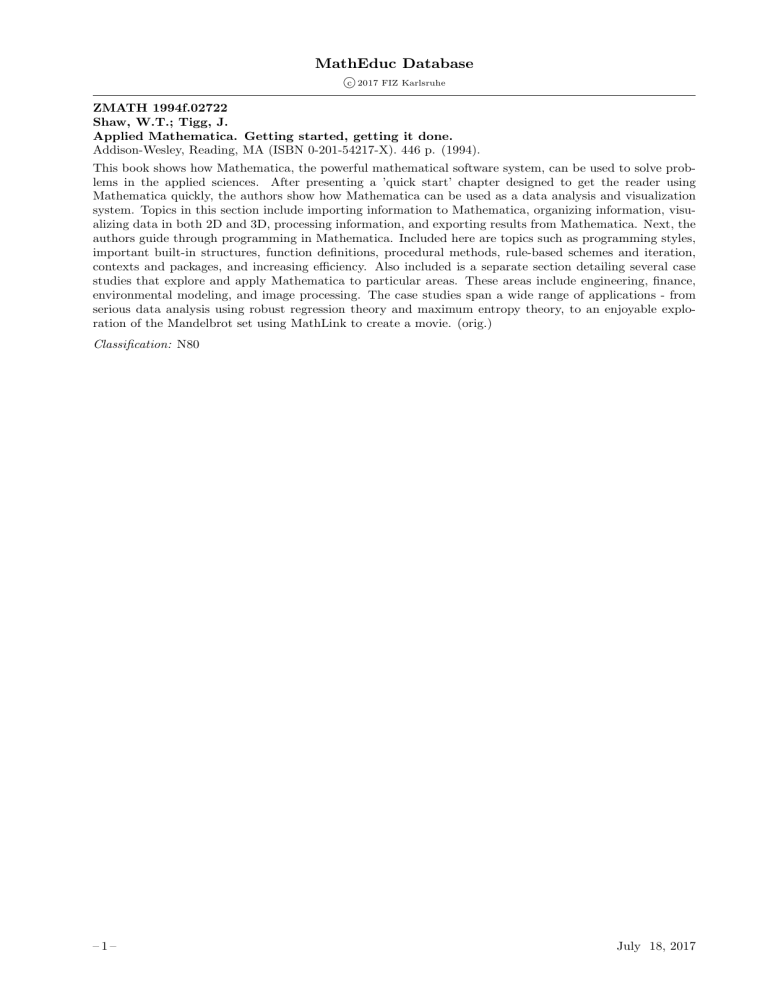
MathEduc Database
c 2017 FIZ Karlsruhe
ZMATH 1994f.02722
Shaw, W.T.; Tigg, J.
Applied Mathematica. Getting started, getting it done.
Addison-Wesley, Reading, MA (ISBN 0-201-54217-X). 446 p. (1994).
This book shows how Mathematica, the powerful mathematical software system, can be used to solve problems in the applied sciences. After presenting a ’quick start’ chapter designed to get the reader using
Mathematica quickly, the authors show how Mathematica can be used as a data analysis and visualization
system. Topics in this section include importing information to Mathematica, organizing information, visualizing data in both 2D and 3D, processing information, and exporting results from Mathematica. Next, the
authors guide through programming in Mathematica. Included here are topics such as programming styles,
important built-in structures, function definitions, procedural methods, rule-based schemes and iteration,
contexts and packages, and increasing efficiency. Also included is a separate section detailing several case
studies that explore and apply Mathematica to particular areas. These areas include engineering, finance,
environmental modeling, and image processing. The case studies span a wide range of applications - from
serious data analysis using robust regression theory and maximum entropy theory, to an enjoyable exploration of the Mandelbrot set using MathLink to create a movie. (orig.)
Classification: N80
–1–
July 18, 2017



